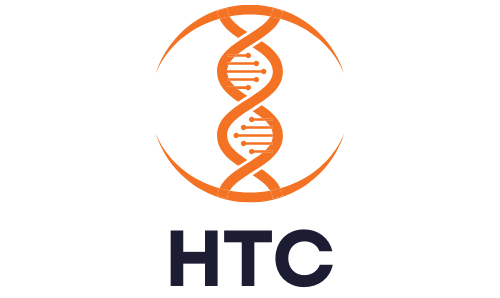Funding Rounds and Investment Strategies in HealthTech
The HealthTech sector has seen unprecedented growth in recent years, fueled by rapid advancements in technology and an increasing demand for innovative healthcare solutions. As the landscape evolves, investors are showing a heightened interest in companies that promise to revolutionize the way we approach health and wellness. From telemedicine to wearable devices, the spectrum of HealthTech is broad and ever-expanding, making it a dynamic and lucrative field for investment.
Securing adequate funding is crucial for HealthTech companies at various stages of their development. Early-stage startups require seed funding to transform innovative ideas into viable products, while more established companies seek larger investment rounds to scale operations, enter new markets, and further enhance their technologies. Investment in HealthTech not only drives innovation but also ensures that groundbreaking solutions reach the market, improving patient outcomes and overall healthcare efficiency.
This blog aims to delve into the intricacies of funding rounds and investment strategies within the HealthTech sector. By exploring different stages of funding, from seed investments to Series A, B, and beyond, we will provide insights into what investors look for and how companies can position themselves to attract funding. Additionally, we will examine successful investment strategies and case studies that highlight the potential returns and impacts of investing in HealthTech.
Understanding Funding Rounds
In the world of HealthTech investments, funding rounds are pivotal milestones that help companies transition from innovative startups to market-leading enterprises. Each funding round serves a specific purpose and targets a unique phase of a company's growth and development.
Definition and Stages of Funding Rounds
- Seed Funding: Seed funding is the initial capital raised to support the early stages of a startup. This round is often used to conduct market research, develop a prototype, and lay the groundwork for a scalable business model. Investors in seed funding rounds typically include angel investors, early-stage venture capitalists, and sometimes crowdfunding platforms.
- Series A: Once a company has a solid prototype and some initial traction, it may seek Series A funding. This round focuses on optimizing the product and business model, expanding the team, and scaling operations. Series A investors look for startups with a strong proof of concept and a clear path to profitability.
- Series B: Series B funding is all about scaling the business. Companies at this stage have a proven product and a growing customer base. The capital raised is used to expand market reach, enhance technology, and increase operational capacity. Series B investors typically include larger venture capital firms that are interested in companies with demonstrated success and significant growth potential.
- Series C and Beyond: At Series C and subsequent rounds, companies are usually well-established and are looking to further expand, develop new products, or even prepare for an IPO. These rounds can attract late-stage investors, including private equity firms, hedge funds, and banks. The focus is on driving growth through large-scale investments and strategic partnerships.
Key Differences Between Each Stage
- Seed Funding vs. Series A: Seed funding is about validating ideas and creating a foundation, while Series A focuses on building and optimizing the business model.
- Series A vs. Series B: Series A aims to establish the product in the market, whereas Series B concentrates on scaling the business to new heights.
- Series B vs. Series C: Series B emphasizes expansion and market penetration, while Series C is often geared towards large-scale growth initiatives and preparation for public offerings or acquisitions.
Examples of HealthTech Companies at Different Funding Stages
- Seed Stage: A startup developing an innovative telehealth platform may secure seed funding to create a working prototype and conduct initial user testing.
- Series A: A digital therapeutics company with a successful pilot program might raise Series A funding to enhance its app, expand its team, and begin marketing efforts.
- Series B: A HealthTech firm with a proven remote patient monitoring system could use Series B funds to scale its operations, enter new markets, and invest in advanced analytics.
- Series C and Beyond: An established company specializing in AI-driven diagnostic tools might seek Series C funding to diversify its product offerings, enter international markets, and prepare for an IPO.
Key Players in HealthTech Funding
The success of HealthTech companies heavily relies on a diverse array of funding sources. Each player in the investment ecosystem brings unique value and resources that can significantly influence the trajectory of a HealthTech startup. Understanding the roles and contributions of these key players is essential for companies seeking to secure funding and achieve long-term success.
Venture Capital Firms and Their Role in HealthTech Investments
Venture capital (VC) firms are among the most influential players in HealthTech funding. They provide substantial financial resources, industry expertise, and valuable networks that can help startups scale rapidly. VC firms often participate in multiple funding rounds, from seed to Series C and beyond, offering guidance and strategic support at each stage.
Key Examples:
- Andreessen Horowitz: Known for its significant investments in digital health and biotech, Andreessen Horowitz has funded companies like Devoted Health and Omada Health.
- Sequoia Capital: With a strong focus on transformative healthcare technologies, Sequoia Capital has backed companies such as 23andMe and Health Catalyst.
- Notable Labs: As a forward-thinking venture firm, Notable Labs invests in HealthTech startups that are at the forefront of precision medicine and personalized healthcare.
Corporate Investors and Strategic Partnerships
Corporate investors, including large healthcare companies and tech giants, play a crucial role in HealthTech funding. These investors often bring more than just capital; they offer strategic partnerships that provide startups with access to extensive R&D resources, distribution channels, and market expertise. Such collaborations can accelerate product development and market entry, giving startups a competitive edge.
Key Examples:
- Google Ventures (GV): GV has invested in numerous HealthTech startups, leveraging Google's technological prowess to drive innovation in healthcare.
- Johnson & Johnson Innovation: This arm of Johnson & Johnson focuses on early-stage investments and partnerships, supporting startups in areas like medical devices, diagnostics, and consumer health.
- Pfizer Ventures: Pfizer’s venture capital arm invests in companies developing cutting-edge therapeutic solutions, often forming strategic alliances to enhance drug development pipelines.
Government Grants and Non-Profit Organizations
Government grants and non-profit organizations provide essential funding and support for HealthTech innovations, particularly those with significant social impact. These funds are often aimed at early-stage research and development, helping to de-risk projects that might otherwise struggle to attract private investment.
Key Examples:
- National Institutes of Health (NIH): The NIH offers various grants and funding opportunities to support biomedical research and innovative health solutions.
- Bill & Melinda Gates Foundation: This foundation funds HealthTech initiatives that aim to address global health challenges, particularly in underserved regions.
- BARDA (Biomedical Advanced Research and Development Authority): BARDA provides funding for the development of medical countermeasures, including vaccines, drugs, and diagnostic tools, particularly those addressing public health emergencies.
Successful Investment Strategies
Navigating the complex and rapidly evolving HealthTech sector requires strategic foresight and careful planning. Successful investment strategies in HealthTech involve a balance of diversification, risk management, and a keen eye for emerging technologies. Here, we explore key strategies that can help investors maximize returns and minimize risks.
Diversification and Risk Management in HealthTech Investments
Diversification is a fundamental principle of investment strategy, and it is especially pertinent in the HealthTech sector, where technological advancements and market demands can shift rapidly. By spreading investments across various sub-sectors, such as digital health, biotech, telemedicine, and medical devices, investors can mitigate the risks associated with the potential underperformance of a single area.
Key Approaches:
- Sector Diversification: Investing in a mix of HealthTech sub-sectors to balance high-risk, high-reward opportunities with more stable, long-term investments.
- Geographic Diversification: Expanding investments across different regions to take advantage of varied regulatory environments, healthcare needs, and market dynamics.
- Stage Diversification: Allocating funds to companies at different stages of development, from early-stage startups to mature enterprises, to balance growth potential and stability.
Identifying High-Potential Startups and Technologies
One of the most challenging yet rewarding aspects of HealthTech investing is identifying startups and technologies with the highest growth potential. This involves thorough due diligence and staying informed about industry trends, scientific breakthroughs, and market needs.
Key Indicators of High-Potential Startups:
- Innovative Solutions: Startups offering novel and disruptive technologies that address significant unmet needs in healthcare.
- Strong Leadership: Companies led by experienced and visionary teams with a proven track record in the industry.
- Scalability: Technologies and business models that can be scaled efficiently to meet growing demand.
- Clinical Validation: Evidence of clinical efficacy and safety, supported by robust data from clinical trials or pilot studies.
Emerging Technologies to Watch:
- Artificial Intelligence and Machine Learning: Technologies that enhance diagnostic accuracy, personalize treatment plans, and streamline healthcare operations.
- Genomics and Precision Medicine: Innovations that enable tailored treatments based on individual genetic profiles.
- Telehealth and Remote Monitoring: Solutions that improve access to care and patient engagement through digital platforms.
Long-Term vs. Short-Term Investment Strategies
Balancing long-term and short-term investment strategies is crucial for sustaining growth and achieving desired returns in the HealthTech sector.
Long-Term Investment Strategies:
- Focus on Fundamental Value: Investing in companies with strong fundamentals, such as robust intellectual property, significant market potential, and sustainable competitive advantages.
- Patient Capital: Being prepared to hold investments for extended periods, allowing startups time to mature, overcome regulatory hurdles, and achieve market penetration.
- Supportive Engagement: Actively engaging with portfolio companies to provide strategic guidance, resources, and support for long-term success.
Short-Term Investment Strategies:
- Market Timing: Capitalizing on short-term market trends and opportunities, such as regulatory approvals, product launches, or favorable industry reports.
- Exit Strategies: Identifying clear exit strategies, such as mergers and acquisitions or IPOs, to realize gains within a shorter timeframe.
- Flexibility: Maintaining the ability to pivot investments based on evolving market conditions and emerging opportunities.
By adopting a balanced approach that combines diversification, diligent assessment of emerging technologies, and a mix of long-term and short-term strategies, investors can effectively navigate the HealthTech landscape. These strategies not only help in managing risks but also position investors to capitalize on the transformative potential of HealthTech innovations.
Case Studies of Successful HealthTech Investments
Examining real-world examples of successful HealthTech investments provides valuable insights into what makes a company attractive to investors and how funding can drive growth and innovation. Here, we analyze notable HealthTech companies and their funding journeys, highlighting key lessons learned and the impact of investment on their success.
Detailed Analysis of Notable HealthTech Companies and Their Funding Journeys
1. 23andMe
Funding Journey: 23andMe, a leader in consumer genetics and personalized health, has raised substantial capital through multiple funding rounds. Notably, it secured $115 million in a Series E round led by Fidelity Management & Research Company in 2015. This round followed earlier investments from firms like Google Ventures and New Enterprise Associates.
Impact of Funding: The funding allowed 23andMe to expand its genetic testing services, enhance its research capabilities, and enter new markets. The company leveraged its genetic data to collaborate with pharmaceutical companies, driving advancements in precision medicine.
Lessons Learned:
- Strong Market Demand: Addressing a growing interest in personal health and genetics attracted significant investor interest.
- Strategic Partnerships: Collaborations with pharmaceutical companies showcased the value of 23andMe's data, further boosting its market potential.
2. Teladoc Health
Funding Journey: Teladoc Health, a pioneer in telemedicine, has experienced a remarkable funding journey. The company raised $50 million in a Series D round led by Jafco Ventures in 2014 and went public in 2015. Subsequent funding rounds and acquisitions, including the purchase of Livongo Health for $18.5 billion, have solidified its position as a telehealth leader.
Impact of Funding: Capital from various funding rounds enabled Teladoc to expand its service offerings, enhance its technology platform, and scale its operations globally. The company's IPO and strategic acquisitions further accelerated its growth.
Lessons Learned:
- Scalability: Demonstrating a scalable business model that could expand rapidly to meet increasing demand was crucial.
- Strategic Acquisitions: Acquiring complementary companies like Livongo helped Teladoc diversify its services and strengthen its market position.
3. Notable Labs
Funding Journey: Notable Labs focuses on precision medicine, utilizing advanced data analytics to predict patient responses to therapies. The company has raised significant capital through various funding rounds, including a $40 million Series B round led by B Capital Group in 2022.
Impact of Funding: The funding has enabled Notable Labs to enhance its precision medicine platform, expand its research capabilities, and pursue clinical trials. The company's innovative approach has attracted partnerships with leading healthcare institutions, further validating its technology.
Lessons Learned:
- Innovative Approach: Pioneering a novel approach to precision medicine attracted substantial investment and strategic partnerships.
- Clinical Validation: Demonstrating the clinical efficacy of its platform was key to securing funding and advancing its research.
Lessons Learned from Successful Investments
Successful HealthTech investments share several common traits that can guide future investment decisions:
- Clear Value Proposition: Companies with a clear and compelling value proposition that addresses significant unmet needs in healthcare are more likely to attract investment.
- Strong Leadership: Experienced and visionary leadership teams are essential for navigating the complex HealthTech landscape and driving company growth.
- Market Potential: Companies with technologies or services that have significant market potential and scalability are highly attractive to investors.
- Clinical and Regulatory Milestones: Achieving key clinical and regulatory milestones provides validation and de-risks the investment, making it more appealing to investors.
Impact of Funding on the Growth and Success of These Companies
Funding plays a critical role in the growth and success of HealthTech companies. It provides the necessary resources to:
- Accelerate Product Development: Funding enables companies to invest in research and development, bringing innovative products and technologies to market faster.
- Expand Market Reach: Capital allows companies to scale operations, enter new markets, and increase their customer base.
- Enhance Technology and Infrastructure: Investment in technology and infrastructure is crucial for maintaining a competitive edge and improving service delivery.
- Attract Talent: Securing funding helps companies attract top talent, which is essential for driving innovation and achieving business objectives.
Challenges in HealthTech Funding
While the HealthTech sector offers significant investment opportunities, it is not without its challenges. Understanding the common hurdles faced during funding rounds, as well as the regulatory, compliance, and market barriers, can help investors and startups navigate the complex landscape more effectively.
Common Hurdles Faced During Funding Rounds
- High Burn Rates: HealthTech startups often require substantial capital to develop and validate their technologies, leading to high burn rates. This can make it challenging to sustain operations without continuous funding and may deter potential investors who are cautious about high-risk investments.
- Proof of Concept: Securing early-stage funding typically requires a robust proof of concept. Startups need to demonstrate the feasibility and potential impact of their technology, which can be difficult without initial funding to support development and testing.
- Valuation Challenges: Determining an appropriate valuation for HealthTech startups can be complex due to the uncertain timelines for product development and market adoption. Overvaluation can deter investors, while undervaluation can result in insufficient capital to achieve growth milestones.
Regulatory and Compliance Issues
- Stringent Regulations: HealthTech companies must navigate a highly regulated environment, with stringent requirements from agencies such as the FDA in the United States and EMA in Europe. Meeting these regulatory standards requires significant time, expertise, and financial resources.
- Data Privacy and Security: Handling sensitive health data necessitates strict compliance with data privacy regulations like HIPAA in the United States and GDPR in Europe. Ensuring data security and regulatory compliance can be a major challenge and requires robust systems and protocols.
- Clinical Trials and Approvals: For HealthTech products, especially those in medical devices and therapeutics, obtaining clinical trial approvals and successfully navigating the clinical trial process is crucial. This process is often lengthy, expensive, and fraught with regulatory hurdles.
Market Competition and Technology Adoption Barriers
- Intense Competition: The HealthTech sector is highly competitive, with numerous startups and established companies vying for market share. Differentiating a product and demonstrating its unique value proposition is essential for attracting both investors and customers.
- Technology Adoption: Despite the potential benefits, adopting new HealthTech solutions can be slow due to resistance from healthcare providers and patients accustomed to traditional methods. Convincing stakeholders of the efficacy and usability of new technologies is a significant challenge.
- Reimbursement Models: HealthTech companies must navigate complex reimbursement models to ensure their products are covered by insurance and accessible to patients. Aligning the business model with existing reimbursement frameworks can be difficult and requires a deep understanding of healthcare economics.
Future Trends in HealthTech Funding
As the HealthTech sector continues to evolve, emerging trends and technological advancements are reshaping investment strategies and driving new opportunities. Understanding these future directions can help investors and startups stay ahead of the curve and capitalize on the next wave of innovation in healthcare.
Emerging Trends and Future Directions in HealthTech Investments
- Increased Focus on Personalized Medicine: With advancements in genomics and data analytics, personalized medicine is becoming a key focus area for HealthTech investments. Investors are increasingly interested in technologies that tailor treatments to individual patients, improving outcomes and reducing costs.
- Expansion of Digital Health Solutions: The COVID-19 pandemic accelerated the adoption of digital health solutions, and this trend is expected to continue. Investments in telemedicine, remote monitoring, and digital therapeutics are likely to grow as these technologies become integral to healthcare delivery.
- Rise of AI and Machine Learning: Artificial intelligence and machine learning are transforming HealthTech by enabling more accurate diagnostics, predictive analytics, and personalized treatment plans. Investment in AI-driven solutions is expected to increase, as these technologies offer significant potential to enhance healthcare efficiency and effectiveness.
- Growth of Wearable Technology: Wearable devices that monitor health metrics in real-time are becoming more sophisticated and widely used. Investors are focusing on wearables that provide actionable insights and integrate with broader health management platforms.
- Integration of Blockchain Technology: Blockchain offers promising applications in healthcare, such as secure patient data management and transparent supply chain tracking. Investments in blockchain solutions for HealthTech are anticipated to rise as the technology matures and its benefits become more widely recognized.
The Impact of Technological Advancements on Funding Strategies
Technological advancements are reshaping how investors approach HealthTech funding. Here are some key impacts:
- Data-Driven Investment Decisions: The availability of vast amounts of health data and advanced analytics tools enables investors to make more informed decisions. Data-driven insights help identify high-potential startups and assess the impact of new technologies more accurately.
- Shorter Development Cycles: Innovations in technology are accelerating the development and validation of HealthTech solutions. Shorter development cycles mean that startups can reach critical milestones faster, making them more attractive to investors seeking quicker returns.
- Collaborative Funding Models: The complexity of HealthTech innovations often requires collaborative funding models, where multiple investors, including venture capitalists, corporate partners, and government agencies, pool resources to support startups. These models help distribute risk and leverage diverse expertise.
- Emphasis on Sustainable and Ethical Investments: As awareness of social and environmental issues grows, there is an increasing emphasis on sustainable and ethical investments. HealthTech startups that address global health challenges and demonstrate a commitment to ethical practices are likely to attract more funding.
Predictions for the Next Decade in HealthTech Funding
- Continued Growth in HealthTech Investments: The HealthTech sector is expected to continue its strong growth trajectory, driven by ongoing technological advancements and increasing demand for innovative healthcare solutions. Investments in this space are likely to remain robust, with a focus on transformative technologies.
- Emergence of New Investment Hubs: While traditional investment hubs like Silicon Valley and Boston will remain influential, new regions are likely to emerge as key players in HealthTech funding. Cities with strong research institutions, supportive regulatory environments, and growing startup ecosystems will attract more investments.
- Greater Role of Public-Private Partnerships: Public-private partnerships will play a crucial role in advancing HealthTech innovations, particularly in areas like pandemic preparedness and global health. These collaborations will help align public health goals with private sector capabilities and resources.
- Increased Investment in Preventive Health Technologies: There will be a growing emphasis on preventive health technologies that aim to reduce the incidence of chronic diseases and improve population health. Investments in areas like early detection, lifestyle management, and wellness programs will gain prominence.
- Enhanced Regulatory Support for Innovation: Regulatory agencies are expected to adapt to the rapid pace of HealthTech innovation by providing clearer guidelines and faster approval processes. This regulatory support will facilitate the development and commercialization of new technologies, attracting more investment.
Recap of key points discussed
In this blog, we've explored various facets of HealthTech funding, offering insights into the investment landscape, the stages of funding, and key players involved. We delved into successful investment strategies and highlighted real-world case studies that exemplify the potential of HealthTech investments. Additionally, we discussed the challenges inherent in this sector and examined emerging trends and future directions that will shape HealthTech funding in the coming years.
Strategic funding is paramount in driving innovation and growth in the HealthTech sector. It enables startups to develop groundbreaking technologies, scale their operations, and ultimately bring life-changing solutions to the market. HealthTech investments not only offer substantial financial returns but also contribute to the advancement of healthcare, improving patient outcomes and overall health systems.
Effective investment strategies, such as diversification and a balanced approach between long-term and short-term investments, are essential for navigating the complexities of this sector. Moreover, understanding and overcoming regulatory and market challenges can significantly enhance the success of HealthTech ventures.
The HealthTech sector is dynamic and constantly evolving, driven by rapid technological advancements and changing healthcare needs. For investors and entrepreneurs alike, staying informed about the latest trends, regulatory updates, and emerging opportunities is crucial. Proactive engagement with the HealthTech community, continuous learning, and adaptability will be key to identifying high-potential investments and fostering innovation.
As the HealthTech landscape continues to expand, the potential for impactful and profitable investments grows. By remaining vigilant and strategic, investors can play a pivotal role in shaping the future of healthcare, contributing to a healthier and more technologically advanced world.
In summary, HealthTech funding is a vital catalyst for innovation in healthcare. Understanding the various stages of funding, recognizing the key players, and implementing successful investment strategies are essential for navigating this promising sector. Despite the challenges, the future of HealthTech funding is bright, with immense opportunities for those who stay informed and proactive. By investing strategically, stakeholders can not only achieve significant financial returns but also make meaningful contributions to the advancement of global health.










